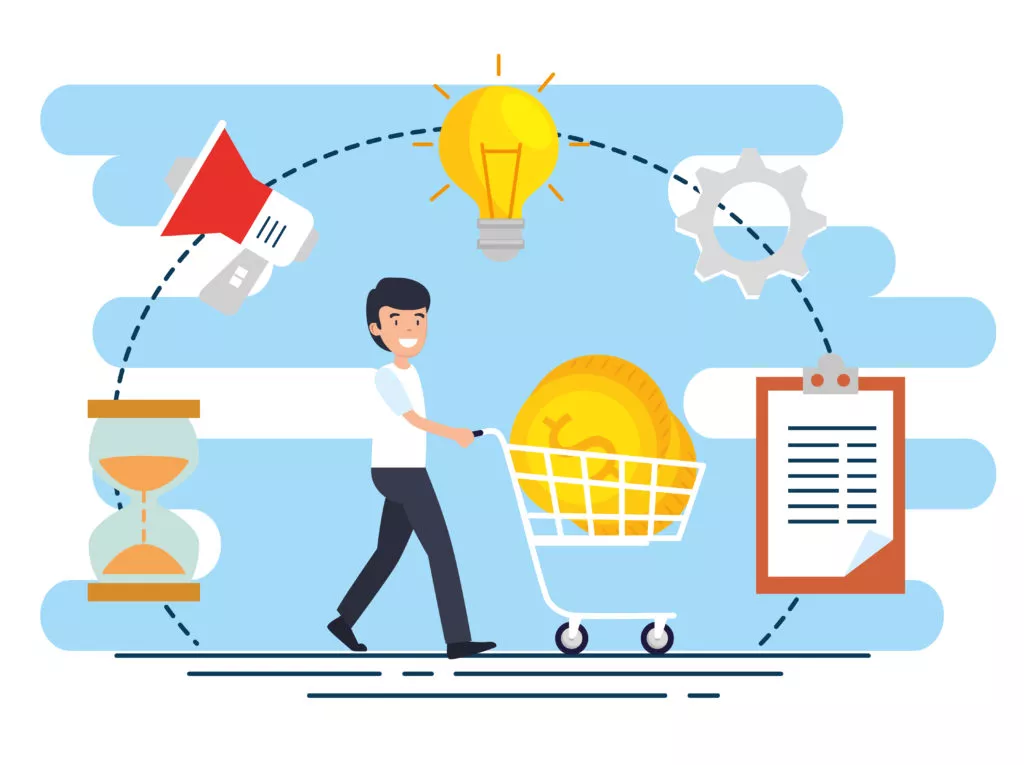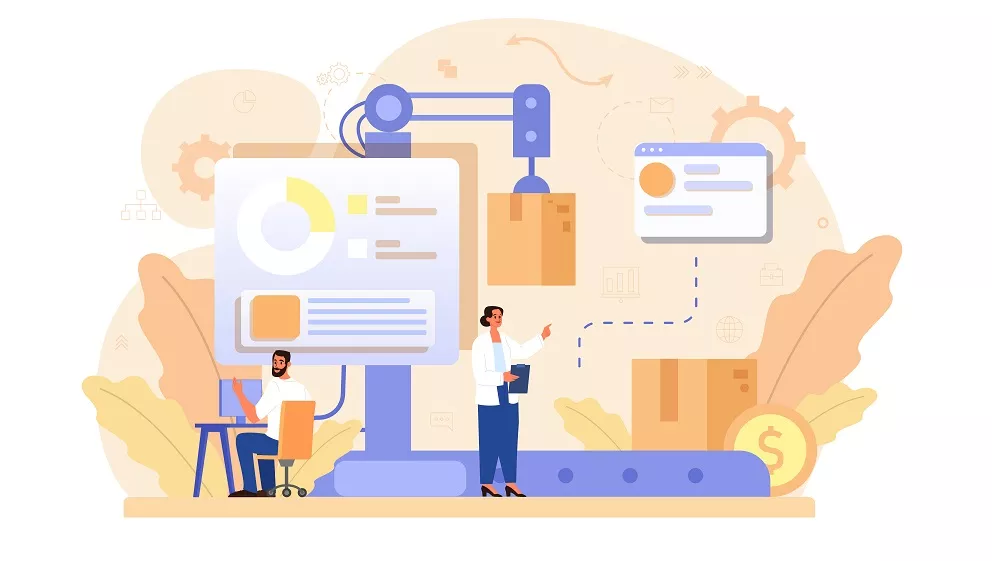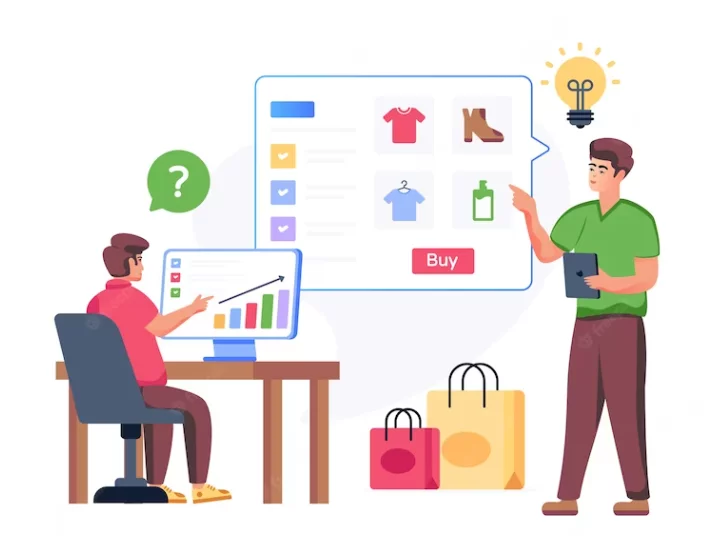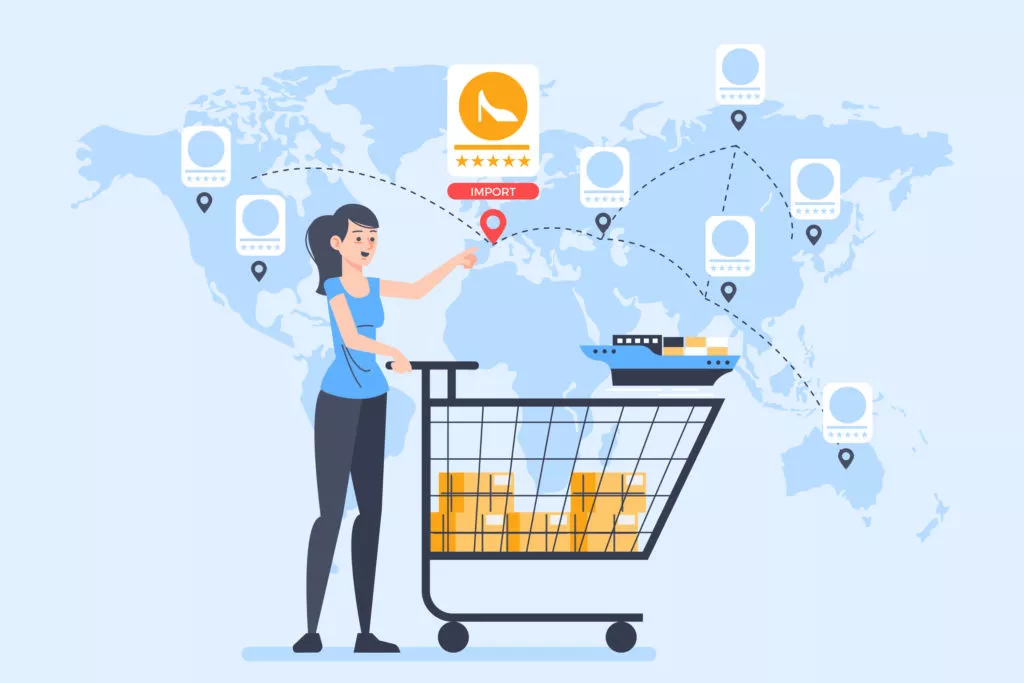Having product ideas to sell is just the beginning of a long yet exciting trajectory to open your business. The next step is to think about how you will find and acquire the products that you want to sell. There are many options in business models to select, each with unique advantages, disadvantages, and challenges.
The four most common ways to start a business are:
- Do It Yourself (DIY)
- Order to Manufacture
- Wholesale Buying
- Dropship
It is crucial to understand each of these business models to make the right decision for your company. There are advantages and disadvantages, so depending on your product, market, and niche, it may be that one of the methods is more suitable for you and your company than others. Let’s evaluate each method in detail.
Do It Yourself (DIY) Business Model
Making your own product is a common strategy for many people who take the craft way or have a hobby. Making jewelry, clothing, or natural cosmetics allows you to have precise control of the quality and brand but has limitations of time and scalability.
The biggest expenses of doing it yourself are the purchase of raw materials, the storage of products, and the workforce. It is important to note that not all products can be made by hand. The choice of your products is limited to your available skills and resources.

Who should opt for DIY?
This type of business model is for those who like to do things on their own instead of buying ready. It’s for people with creative ideas who can create products and have the resources to do it.
Through manufacturing, it is possible to control the quality of the product and the brand and, at the same time, keep the initial costs low.
Benefits
- Lower starting costs – When making your own products, you do not have to create multiple ones at one time, contrary to what would happen if you had them manufactured. This allows you to have relatively low production costs, which, for many e-commerce companies, is the biggest initial expense.
- Brand control – Own manufacturing allows you to create the brand you want without any limitation
- Price control – As well as brand control, price control makes it possible to charge as much as you deem appropriate for your products.
- Quality control – When you manufacture your products yourself, you can closely control quality by making sure they meet your expectations and those of your customers.
- Agility – Own manufacturing provides agility to your company since you can adjust the quality and prices, change the brand, or even the entire product in the blink of an eye.
Disadvantages
- High investment of time – Depending on the product you choose, it may take time to do, leaving less time to focus on the company.
- Scalability – Making your own products can become problematic when your business starts growing. Although you can have it done at any time, it may not be easy or feasible if your customers already expect their products to be handmade.
- Product Limitation – As mentioned earlier, your product options are limited to your skills and the resources you have available. This varies from person to person.
Margins
Margin potential is usually higher when you manufacture your products yourself since you have more control over costs and prices. However, consider manufacturing time since if your product is complicated and time-consuming to do, this type of business model can cause a pocket-drilling drop in profits.
Scratches
Normally, making your own products is a low-risk financial option. Since you take care of the manufacturing yourself, there is no minimum order, contrary to what would happen if you ordered an outsourced manufacturing company or if you bought your wholesale product. You may even be able to create craft products as you receive orders, which permits you to get the business to work before you even invest much time, energy, and money into it.
Order to Manufacture Business Model
Another viable option to purchase your products is to find a reliable manufacturer. You have the option to find a manufacturer in The United States or abroad. As you may already imagine, national manufacturers usually charge more than those from China, Taiwan, or India. However, if you opt for a foreign manufacturer, consider the import taxes.
If you are already looking for an overseas manufacturer, you will probably end up at Alibaba’s website. Alibaba has become one of the largest business-to-business marketplaces that connect, for the most part, Asian manufacturers to North American buyers. There are a number of similar but smaller companies that focus on the same kind of service, such as IndiaMart.

Who should choose to have it manufactured?
Ordering to manufacture the products is ideal for anyone who has a unique idea or a variation of a product on the market that does not yet exist. This business model is also great for anyone who has already validated that there is a market for a product and is sure that the product will succeed in sales. This is important since third-party manufacturing requires a larger initial investment to manufacture your products and create an inventory.
Benefits
- Low cost per unit – Manufacturers often charge a low per unit, which makes it possible to have a good profit margin.
- Brand control – Having your product manufactured allows you to create your own brand without any type of limitation. You can also control the prices of your products with ease.
- Quality control – Unlike dropshipping or wholesale buying, ordering to manufacture your products lets you do quality control of the finishing product.
Disadvantages
- Minimum Order – One of the biggest disadvantages of having your products manufactured is the cost of initial orders. Depending on the supplier and the cost of manufacturing your product, you can easily end up investing hundreds or even thousands of dollars.
- The possibility of fraud by manufacturers abroad – Nothing is worse than having to stop everything because of a fraud or a scam applied by an outside manufacturer.
- Time – Having it manufactured is probably the most time-consuming option. The production process can be long, with the creation of prototypes, samples, product improvement, and production. This becomes even more difficult or time-consuming if you plan to work with a manufacturer overseas, as there are language, culture, and distance barriers.
Margins
When you have your product manufactured, its margins can vary greatly depending on the product itself, the manufacturer, and the number of items. However, generally, this business model offers the potential for higher profit margins than other methods, such as wholesale or dropshipping.
Scratches
In most cases, manufacturing is the option with the highest risk. You need to buy products without any sales guarantee. Manufacturers commonly have a minimum quantity per order, so you end up starting with thousands of products. The minimum order depends on the product and the manufacturer, so talk to the manufacturer first about the minimum quantity per order and try to negotiate it if necessary.
There is also the risk of fraud or scams if you are buying from an international manufacturer, especially from Asia. Business-to-business sites like Alibaba have fraud prevention measures. However, this business model remains a problem, and it is difficult to appeal when you fall into a coup.
Wholesale Buying Business Model
Buying wholesale business model is a relatively simple process. You buy your products, which are usually from other brands, directly from manufacturers or from an intermediary supplier for a discounted price. You resell these products for a higher price.
There are a few reasons why wholesale buying business model is a lower-risk business model compared to having your products manufactured. The first is that by buying in wholesale, you deal with brands that are already validated in the market. Consequently, you do not run the risk of wasting time, effort and money developing a product that nobody wants to buy. In addition, you do not have to buy such a large amount in relation to the manufacture of the products by third parties. The minimum order depends on the manufacturer and the product. However, it is generally reasonable and may even be one product only.

Who should choose to buy wholesale?
Buying wholesale business model is a good option if you want to open your company soon or if you want to sell a diverse range of products and brands. There are many opportunities, as there are many products available to buy wholesale.
Benefits
- Selling established products – By selling well-established products, you reduce the risk of buying non-selling stocks.
- Brand recognition – Selling already established brands in the market helps in positioning your brand with a positive image.
Disadvantages
- Selling established products – Selling products established in the market can be both an advantage and a disadvantage. As the product is already being sold by other retailers, you will have to work hard to gain a competitive advantage and persuade customers to buy them in your store.
- Price control – Selling other brands means that you have to act according to the rules of these brands. Some brands have strict price controls to prevent their products from being sold at a discount. This limits the possibility of making promotions.
- Inventory management – Wholesalers usually have a minimum order for each product. The minimum order depends on the product and the manufacturer. You will need to stock up and manage the inventory for future orders.
- Dealing with Several Wholesalers – If you have a wide variety of products, doing business with multiple wholesalers at the same time is difficult to manage. Requirements vary by supplier.
Margins
The margins of the wholesale buying business model are good in relation to dropshipping but not as profitable as those of having their products manufactured. Buying in bulk is considered an intermediate choice between manufacturing and dropshipping. Although each case is different, it is possible to achieve 50% margins on products purchased wholesale and sold at the retail price.
Scratches
Buying wholesale business model is a lower-risk business model than manufacturing, but the risks do exist. You buy products often without seeing them in person before. Possibly, the biggest challenge is being able to differentiate yourself from several other retailers who sell the same products.
Dropshipping Business Model
The business model concept of dropshipping, or direct shipping, is to sell products without stocking them or producing them. The process works as follows: You receive an order from your online store and forward the order to your supplier or drop shipping partner, who processes the order and sends it to your customer on behalf of your company. The main aspect to take into account to make money with dropshipping is to profit from the price difference between how much you charge and the price stipulated by the dropshipping provider.
The best advantage of dropshipping business model is the ability to present a wide variety of products without stocking or having to manage them. It is also a fantastic tool for diversifying your product range, as well as testing products since it’s just a matter of adding new products to your store.
You can work directly with manufacturers who offer the dropshipping service when contacting them, or else you can work with a drop shippers aggregator such as Worldwide Brands. Aggregators work with hundreds of manufacturers and make it easy to sell thousands of product types without having to maintain direct contact with each individual manufacturer.
But remember that while aggregators simplify the possibility of selling a series of products, they charge a share of their often-low dropshipping profit margins. In addition, many aggregators charge a kind of annual fee or registration fee, which costs a few hundred dollars. Generally, you cannot even see the products or profit margins of the products they offer before paying that fee.

Who should opt for dropshipping business model?
Dropshipping, by nature, is the cheapest option to get started. Consequently, this type of business model is for those who prefer to have low starting costs and do not care so much about profit margins. It is also an excellent option for anyone who does not want to stock products and manage them.
Benefits
- Low initial cost – The biggest advantage of dropshipping is the low initial cost. Since you never stock your products, you do not have inventory costs, which are usually the heaviest part of the budget of those opening a virtual store.
- Low Risk – Since you do not buy any products before you make a sale, you do not run the risk of stocking products that you cannot sell.
- Simplify Sales – The dropshipping provider takes care of selecting, packaging, and shipping the product for you. This provides efficiency and convenience, allowing you to run your business anywhere in the world.
Disadvantages
- High competition – Dropshipping has very low entry barriers. There are many people doing this. In other words, the competition is fierce, which makes it difficult to stand out from other companies.
- Low Margins – One of the significant disadvantages of dropshipping is the very low profit margin. This makes it very difficult to compete with paid advertising, which means you need to invest more in content, services, etc. Low margins also mean you have to sell a high volume to get good profits.
- Inventory Synchronization (Out of Stock) – Another major disadvantage of dropshipping is the delay. As you rely on third-party inventory, sometimes it happens that you place an order for a supplier, but the product is exhausted. The result is that delivery takes longer than you promised the customer, which can give your store a bad reputation.
Margins
In this type of business model, your profit will be the difference between what was charged to the customer and the price that the dropshipper charges you. Usually, the profit margins of dropshipping are low, around 20%.
Scratches
Dropshipping business model has low risks since you do not need to stock your products or worry about freight. However, there is a risk of low profit margins and high competition. Low margins mean you have to sell a lot to make a profit, which also reduces the feasibility of doing certain marketing campaigns like pay-per-click to get new customers.
Also Read: What, How, When Of A Dropshipping Business
Also Read: Top 10 Dropshipping Companies In The World
Also Read: 100+ Hotselling Dropshipping Products Of 2023
Also Read: Is Dropshipping Business Still Going To Be Profitable In The Coming Years?
What is the best business model for you?
Choosing the right business model in 2020 and beyond requires careful consideration of your resources, goals, and market dynamics. Each of the options – making, manufacturing, wholesaling, or dropshipping – has its advantages and disadvantages.
If you have the expertise, resources, and capacity for production, making and manufacturing can offer greater control over quality and customization. However, it may involve higher upfront costs and operational complexities.
Wholesaling is a well-established model that allows you to sell in bulk to retailers. It can be profitable, but you need strong connections and the ability to manage inventory efficiently.
On the other hand, dropshipping offers a low-risk entry into the e-commerce world, requiring minimal upfront investment and inventory management. It’s a scalable model, but you’ll have less control over product quality and shipping times.
Ultimately, the right business model for you depends on your specific circumstances and long-term objectives. It’s essential to conduct thorough market research, analyze your financial capabilities, and consider your expertise before making a decision.
Another part of the equation
In 2020 and beyond, the ecommerce landscape continues to evolve, presenting both opportunities and challenges, so adaptability and innovation will be key to your success, regardless of the chosen business model. Keep in mind that what works best today may need adjustments tomorrow, so stay vigilant, stay informed, and be ready to pivot when necessary to thrive in the dynamic world of business.
At Nestify, we specialize in fully managed WooCommerce hosting, so you can focus on growing the business without worrying about your store. Our team is an expert in WooCommerce performance optimization and can reduce up to 10 seconds of loading time from WooCommerce stores, giving you a competitive advantage.



